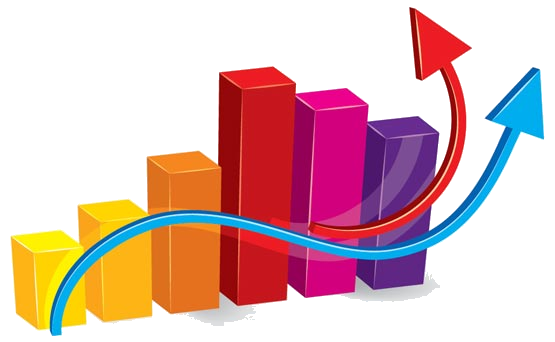Economic problem set
Question 1: Labour Supply and Demand (30 Marks)
Suppose the aggregate production function for a country is given by:
Y = AKαN
β
Y stands for output, K stands for the capital stock, N stands for the number of people employed, and A
stands for total factor productivity. Consider the case with α = 1 − β = 0.75. Also, suppose the aggregate
labour supply for the country is given by w = NS/4, where w denotes the real wage and NS denotes
aggregate labour supply. Assume that the price level is P = 2.
a) Using calculus derive a formula for the aggregate labour demand (N D). Express aggregate labour
demand as a function of the real wage (w).
b) Assuming that A = 4 and K = 4, solve for both the equilibrium real wage (w
∗
) and full-employment
level (N∗
). Depict the labour market equilibrium in a diagram. Also, find the full-employment level of
output (Y
∗
).
c) Suppose there is a change in aggregate labour supply due to a decrease in labour force participation
(e.g., more workers go into retirement). The new aggregate labour supply is given by w = NS/2.
– Find the new employment level, real wage, and full-employment output. Use a diagram to show the
effect of the change in labour supply.
– If the real wage is slow to adjust in the short-run, (meaning that the real wage does not change in the
short-run), how many workers will be hired after the decrease in labour force participation? Are there any
workers that are now unemployed?
Question 2: Modelling Consumption and Savings Decisions (40 Marks)
This question studies the present value budgeting problem introduced in class, and covered in the Appendix
to Chapter 4. Suppose Abel’s life is divided into two main blocks of time: periods 1 and 2. His
lifetime budget constraint is:
c1 +
c2
1 + r
= y1 − t1 +
y2 − t2
1 + r
Abel works in period 1, with income y1 = 1400, and pays tax t1 = 400. In period 2 he is retired, and
he receives income y2 = 1500 from his CPP, and pays tax t2 = 400. Abel desires to perfectly smooth
consumption over the two periods, so that c1 = c2 = c
∗
. The real interest rate is 10%.
∗The material contained in this document is copyrighted c , property of the University of Victoria, meant exclusively for
the use of students enrolled in ECON 204, and it cannot be shared without the author’s explicit consent.
a) What is Abel’s present value of lifetime resources? What is the highest feasible consumption in the
current period? What is the highest feasible consumption in the future period? Use the information provided
to graph the budget line.
b) Find the optimal consumption in each period (c
∗
) and the amount of saving/borrowing. Is Abel
a borrower or a lender? Plot the optimal consumption point along with the budget line and the original
no-borrowing, no-lending point on the graph.
c) The Bank of Canada is worried about the poor performance of the economy, so they decrease the real
interest rate to 0%. Find the new optimal consumption and savings plan, and show graphically the effects of
this policy change. Compared to the result in part b, explain how the substitution and income effects work.
d) Now suppose instead that the government plans for a tax cut to stimulate current consumption in the
economy, without changing the government spending pattern over the two periods. The government decides
to cut the current tax by $100 to t1 = 300 per person. The government goes into debt to finance the tax
cut in period 1, but they plan to retire the debt in the next period by raising t2 for each tax payer. Suppose
the real interest rate is 10%. What will the new value of t2 be? Will the tax cut in period 1 be successful
to stimulate consumption in period 1? Explain.
Question 3: Taxes and Investment Choices (30 Marks)
This question studies the effect of a tax on investment spending. Suppose that the marginal product of
capital for the next period (MPKf
) is given by:
MPKf = 202 − 2Kt+1
where MPKf
is the expected future marginal product of capital, and Kt+1 is the desired capital stock
in the next period. Assume that: corporate taxes (τ ) are 50% of firms’ revenues, the capital depreciation
rate (d) is 5% and the price of capital (Pk) is 10. The current capital stock is Kt = 100.
a) Assume that the interest rate is r = 0.05. What is the value of the firm’s desired capital stock?
What is the gross investment spending by the firm this year? What is the gross investment spending for the
following years, if the expected future marginal product of capital remains the same?
b) In order to raise tax revenues, the Canadian government plans to increase the tax rate on corporate
revenues by half. What will be the effect on gross investment spending by the firm this year and in later
years? Is the policy going to be successful?
c) Using the tax rates from both part (a) and (b), write the tax-adjusted user costs of capital as functions
of real interest rates. Then, for both cases, derive the firm’s desired capital stock and desired investment as
functions of the real interest rates. Comment.

 Our orders are delivered strictly on time without delay
Our orders are delivered strictly on time without delay  Our orders are delivered strictly on time without delay
Our orders are delivered strictly on time without delay 



